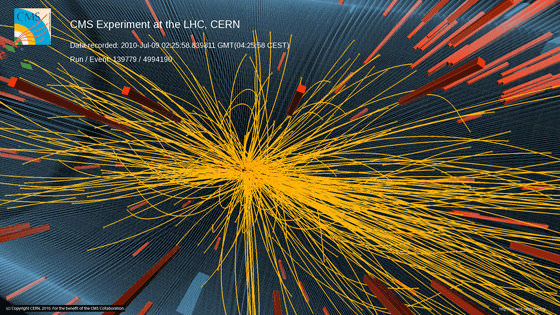[/caption]
Scientists at the Large Hadron Collider reported today they apparently have discovered a previously unobserved phenomenon in proton-proton collisions. One of the detectors shows that the colliding particles appear to be intimately linked in a way not seen before in proton collisions. The correlations were observed between particles produced in 7 TeV collisions. "The new feature has appeared in our analysis around the middle of July," physicist Guido Tonelli told fellow CERN scientists at a seminar to present the findings from the collider's CMS (Compact Muon Solenoid) detector.
The scientists said the effect is subtle and they have performed several detailed crosschecks and studies to ensure that it is real. It bears some similarity to effects seen in the collisions of nuclei at the RHIC facility located at the US Brookhaven National Laboratory, which have been interpreted as being possibly due to the creation of hot dense matter formed in the collisions.
CMS studies the collisions by measuring angular correlations between the particles as they fly away from the point of impact.
The scientists stressed that there are several potential explanations to be considered and the they presented their news to the physics community at CERN today in hopes of "fostering a broader discussion on the subject."
"Now we need more data to analyze fully what's going on, and to take our first steps into the vast landscape of new physics we hope the LHC will open up," said Tonelli.
Proton running at the Large Hadron Collider is scheduled to continue until the end of October, during which time CMS will accumulate much more data to analyze. After that, and for the remainder of 2010, the LHC will collide lead nuclei.
Source:
CERN
 Universe Today
Universe Today
